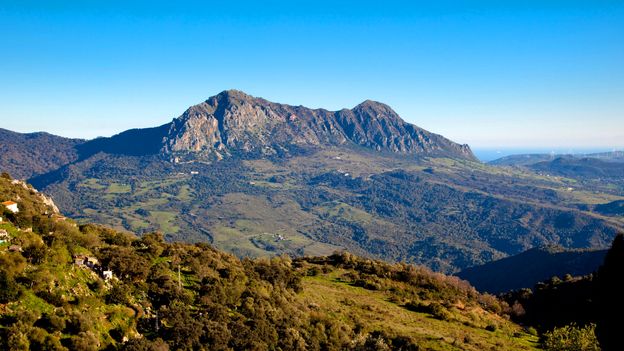“Winston Churchill was here too,” Duran added. “The hotel is very important for everyone associated with Algeciras. I’d describe it as British with a Spanish influence.”
According to local historian Roberto Godino Hurtado, the line is named for the 19th-Century British railway financier, Sir Alexander Henderson, who backed the engineer John Morrison when the Spanish government granted his company permission to construct the railway.
Previous attempts by other companies had failed. One of the main challenges was that 19th-Century Andalusia was notorious for banditry; the dense forests and mountainous outcrops provided ideal sanctuaries for highwaymen to hide and exploit, and the only safe way to travel was by sea. But in 1844, the Guardia Civil – the national rural Spanish police force – was founded to put a stop to brigandage on the country’s roadways. Their presence along the developing route helped discourage highway raids and over the course of three years, Morrison and his team were able to finish the railway, inaugurating the final section in November 1892. The new railway now provided a far safer way to cross the countryside; trains – faster, larger, connected by telegraph – were naturally harder to rob than stagecoaches and mules.
More like this:
• What Santiago’s many ‘Camino’ pilgrims often miss
• A nostalgic train ride through Portugal
• The century-long saga of Europe’s unluckiest train station
More than a century later, the bandits have vanished, but the legacy of the line named after Henderson remains. As I continued my journey, I saw the early evening haze in the sky through the carriage windows give way to oak and chestnut treetops on either side of the track. Passing between vast landscapes, bales of hay punctuated the farmers’ fields, while thorny trackside brambles were swept aside as the train trundled along. Today, the original Victorian cars and clickety-clack of the steam locomotive has been replaced with the low hum of modern, comfortable air-conditioned carriages, but the stunning views remain.
When we reached Gaucín station, a handful of passengers alighted to make the 7m hike through wild olive and fig trees to the spectacular Cañón de las Buitreras (Vultures’ Canyon), a more-than 100m-high limestone gorge carved by the Guadiaro river. As they stepped off the train, the hikers were greeted by a stationmaster, one of several posted at the route’s various stations. Dressed in a Victorian period-inspired buttoned-up navy jacket, red cap and flag with a whistle in hand, he told the train driver when it was safe to push on.
